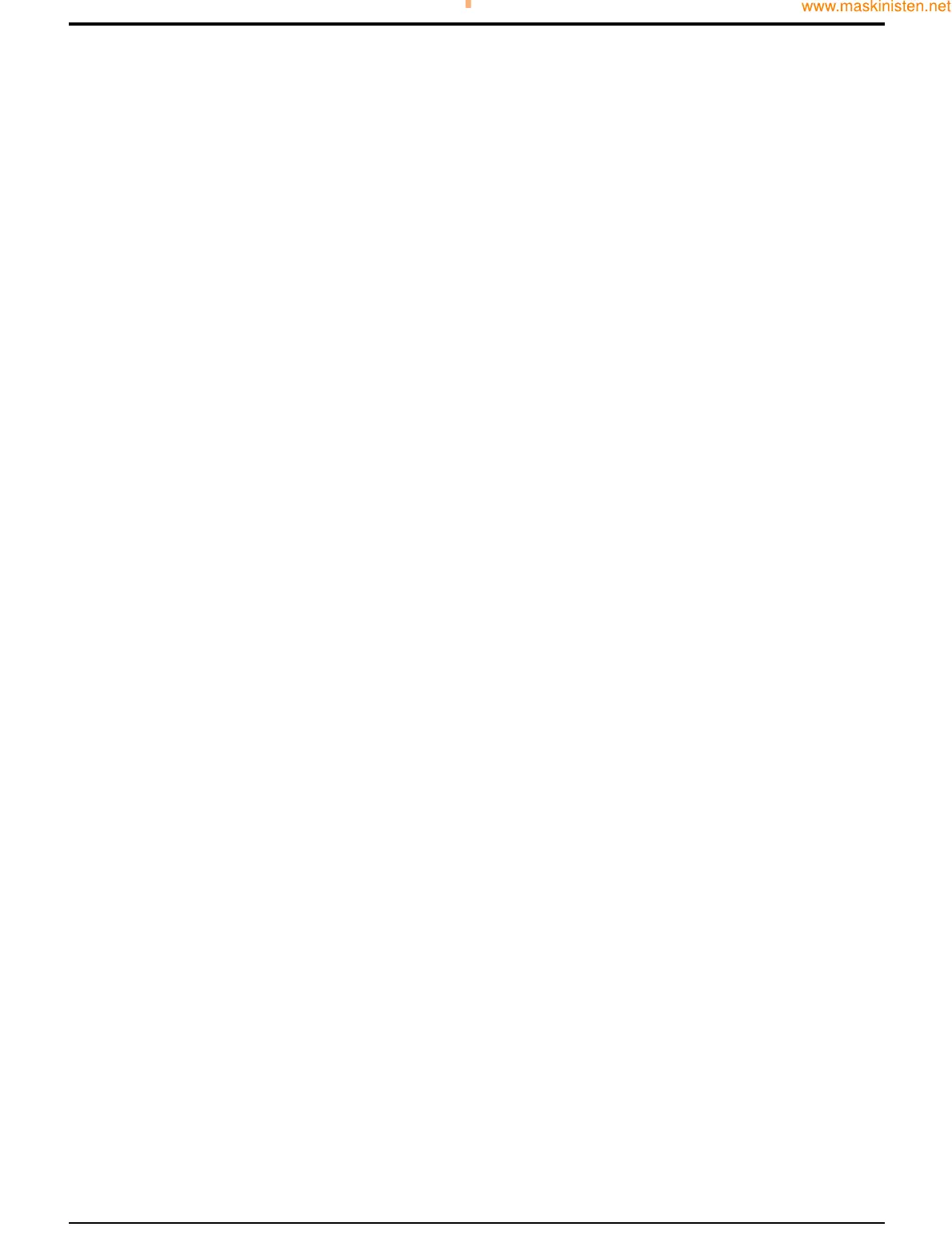15 - 4
Descriptions (cont'd)
Unloading and Speed Control System
The compressor air output is controlled by the unloader
valve 4 which regulates the amount of air admitted to the
compressor unit, in conjunction with variation of engine
speed via control cylinder 7.
When the compressor is started, the vacuum created within
the unloader body causes valve 4 to move against spring 6
into the bore of piston 1. Air is thus admitted to the
compressor to build up pressure in the air/oil receiver 10
and delivery manifold 20. Receiver pressure is piped to
pneumatic cylinder 11 (which increases the engine idling
speed), and manifold pressure to pressure regulator 18.
On starting up, receiver pressure passes through the
pneumatic cylinder and acts directly on unloader diaphragm
14 and speed control cylinder. When the receiver pressure
reaches approximately 7.0 bar (100 Ibf/in
2
), it overcomes
springs 2 and 8. Piston and unloader valve then move to the
right to close off the air intake, and the speed control
cylinder reduces the engine speed to idling.
As the demand for air from the machine varies, regulator 18
will adjust the pressure in diaphragm chamber 13 in
response, and the unloader valve and speed control cylinder
will move until the air demand is exactly matched.
When the compressor is shut down correctly (i.e. the
delivery cocks are first closed) the machine will be off-load
with the unloader valve held firmly on its seat. As the rotors
stop turning, pressure in the receiver is prevented from
getting back to the inlet pipework by the closed unloader
valve which now acts as a non-return valve.
The resulting pressure build up within the unloader body is
utilised to operate the blowdown valve to release all
pressure within the machine to atmosphere.
As the pressure in diaphragm chamber 13 dissipates, spring
2 moves piston 1 to the left, while the unloader valve
extends from the piston bore to remain on its seat, assisted
by spring 6.
The system is then ready for the next start-up.
Note that vents A are used to dissipate residual pressure
that may otherwise prevent the respective pistons from
moving.
Section A Attachments
9803/7130
Section A
15 - 4
Issue 1
Airmaster Compressor

